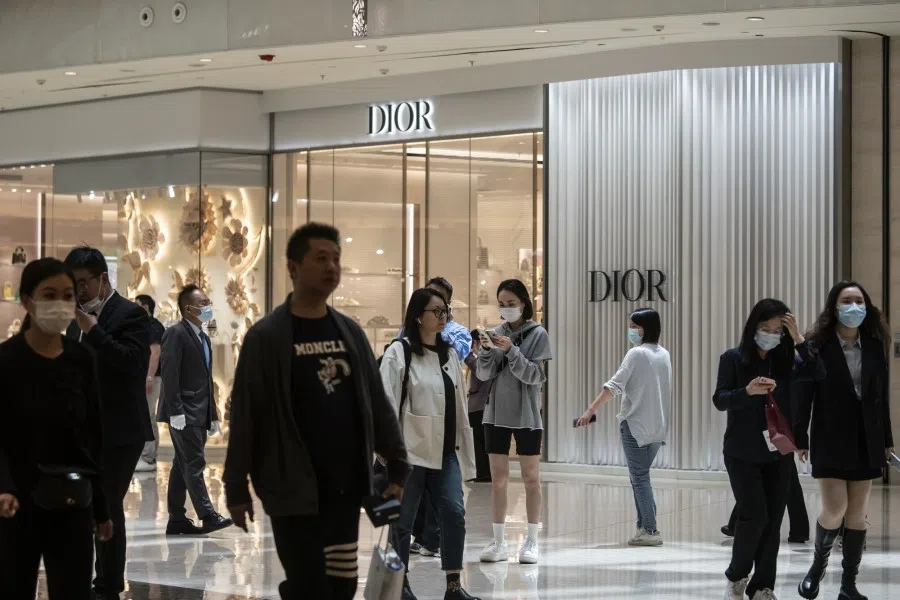Has the pandemic left a 'permanent scar' on the Chinese economy?
Almost all countries have been suffering the impacts of the pandemic since 2020, but China was hit by the pandemic first and had implemented the longest and strictest anti-Covid policy. China could suffer a worse "scarring effect" as a result, both on the societal and economic levels. China is desperate for solutions to get out of this situation.

The World Health Organization (WHO) ended the global emergency status for Covid-19 on 5 May last week, marking an end to the global pandemic. However, for China, the negative effects of three years of Covid prevention and control are still around, while their long-term implications may become increasingly apparent.
Medical experts refer to the long-term damage to patient health caused by Covid-19 as "long Covid", in which patients suffer prolonged symptoms after infection. This long-tail effect can also occur on the economic level, which the Chinese media calls the "scarring effect" (伤痕效应).
Recently, officials from the People's Bank of China cited surveys indicating that the scarring effect of the pandemic has yet to fade, and the recovery of consumer demand, especially for bulk consumption, will take time.
Insufficient domestic demand
The lingering scarring effect is not alarming - what is worrying is that the initial boost in consumer market activity during the pandemic's opening is only a short-lived retaliatory rebound, and the true scarring effect will continue to be highlighted over time.
The Chinese government has set a CPI target of about 3% for 2023, but the reality is quite different from the official expectation.

On 11 May, China's National Bureau of Statistics released the Consumer Price Index (CPI) and Producer Price Index (PPI) for April, which reflect the trend of prices. China's CPI in April rose by 0.1% year-on-year, marking a new low since February 2021 and lower than the market's general expectation of 0.4%. This is the third consecutive month that China's CPI growth has fallen.
For consumers, it is good news that prices are not rising, but from an economic standpoint, it is a warning sign that reflects insufficient domestic demand. This confirms that consumers' attitudes have changed after three years of Covid, and they are more inclined to save money and lack confidence in the future. China's current bleak youth employment situation is also likely to suppress consumption.
The Chinese government has set a CPI target of about 3% for 2023, but the reality is quite different from the official expectation.
In the same month, the PPI - the leading indicator of China's CPI - decreased by 3.6% year-on-year, marking the seventh consecutive month of decline and the fourth consecutive month of increasing decline that was also higher than expected.
Economic analysts noted that while China has not gone into a typical deflationary period, deflationary pressure is intensifying, and policy efforts are urgently needed to boost the economy. Currently, signals of insufficient domestic demand and economic weakness are showing in various areas, both at the macro and micro levels.
This is also reflected in official data, which shows that the number of travellers during the May Day period increased by 19% compared to 2019, but tourism revenue only increased by a negligible 0.66%.

For example, China's customs data released last week showed a slowdown in export growth in April and a sharp decline of 7.9% in imports. Our Chongqing-based colleagues reported that vendors in tourist areas and homestay operators said that during the May Day holiday, there were many visitors but less consumption, and their business turnover was at least 30% lower than before Covid, even worse than during the Chinese New Year and immediately after lockdown was lifted. This is also reflected in official data, which shows that the number of travellers during the May Day period increased by 19% compared to 2019, but tourism revenue only increased by a negligible 0.66%.
Desperate for solutions
The severity of the economic downturn is best illustrated by cities relaxing their prohibitions on vendors setting up street stalls. According to a report by chinatimes.com.cn this week, first-tier city Shenzhen made the first move to revitalise the street stall economy by issuing new regulations; from September, vendor sites will be allowed and designated as long as they are convenient, reasonably laid out, and properly supervised.
Some Chinese media have concluded that Beijing, Shanghai, Hangzhou, Kunming, Xiamen, Chengdu and other regions have all loosened their regulations on street stalls this year to emulate the success of Zibo barbecue. However, if we looked closely, we will find that Zibo barbecue has not yet become popular when street stall regulations were eased in many of these cities. The reality is that various regions are hard-pressed to find ways to revitalise the economy and people's livelihoods.
If China wants to rely on street stalls to drive the economy, it would instead highlight the government's lack of practical measures to revitalise the economy.

Also, it seems somewhat ironic that China's tech hub of Shenzhen is also learning from Zibo. The latter is a third-tier city that became the talk of the town by promoting barbecue that drives local tourism development - an inspirational story of striving for excellence. But it's different when a city like Shenzhen wants to develop the street stall economy. One wonders at the severity of the situation.
While it is commendable that the local governments are willing to humble themselves and allow people to set up street stalls as a form of flexible employment or to support the family, and the street stall economy can indeed make life more convenient and help stabilise prices, one cannot expect it to drive the macroeconomy.
The street stall economy is ultimately a low quality market economy with a low degree of openness. If China wants to rely on street stalls to drive the economy, it would instead highlight the government's lack of practical measures to revitalise the economy.
A 'permanent scar'?
Almost all countries have been suffering the impacts of the pandemic since 2020. China was hit by the pandemic first and had implemented the longest and strictest anti-Covid policy. This means that the "long-tail effect" on China is likely to be longer.
Before China eased its Covid restrictions, experts had already warned that protracted lockdowns could result in long-term "scars". In particular, China's economy had already slowed prior to the pandemic and policies were already shifting. These are compounded by a more severe external environment, a global economic downturn and intense China-US rivalry after the pandemic.
Perhaps in 2023, the competition is not about who is able to reach the fastest growth but about who is better able to preserve vitality and survive.

Against this backdrop, the global supply chain is being reorganised at an accelerated pace, with some large multinational companies or foreign manufacturers moving their production bases out of China under geopolitical security considerations or political pressure.
India, Vietnam, and Mexico have rushed to undertake the manufacturing business that has moved out of China. For example, Apple's latest flagship product, the iPhone 14, was produced in India last year. JPMorgan estimates that a quarter of all iPhones will be made in India by 2025.
If China is no longer the locomotive of world economic growth and a market that other countries cannot live without, its global influence will be directly affected, which is why China cannot afford a prolonged economic downturn.
The good news is that the International Monetary Fund projects that China's economy is set to grow 5.2% this year, while the US's economic outlook is weak and the US dollar is depreciating, and exports from neighbouring economies such as South Korea and Vietnam fell by more than double digits in the first quarter. Perhaps in 2023, the competition is not about who is able to reach the fastest growth but about who is better able to preserve vitality and survive.
In the latter half of last year, analysts were already debating how the three-year pandemic had hurt the Chinese economy - was it just a slip or has it caused a serious fracture? Was it just a nightmare or has it left a permanent scar?
These questions have resurfaced. There is still anxiety about the future although we are not as shocked as when we first woke up from the nightmare.
This article was first published in Lianhe Zaobao as "中国经济"长冠效应"显现".
Related: It may be too early to celebrate China's exports rebound | China's first quarter figures positive, but pandemic leaves a long shadow | China local governments' fiscal stress may roll over to 2023, think tank warns | External challenges could hinder China's economic recovery | Uneven recovery ahead for China's economy

![[Big read] Paying for pleasure: Chinese women indulge in handsome male hosts](https://cassette.sphdigital.com.sg/image/thinkchina/c2cf352c4d2ed7e9531e3525a2bd965a52dc4e85ccc026bc16515baab02389ab)

![[Big read] How UOB’s Wee Ee Cheong masters the long game](https://cassette.sphdigital.com.sg/image/thinkchina/1da0b19a41e4358790304b9f3e83f9596de84096a490ca05b36f58134ae9e8f1)

